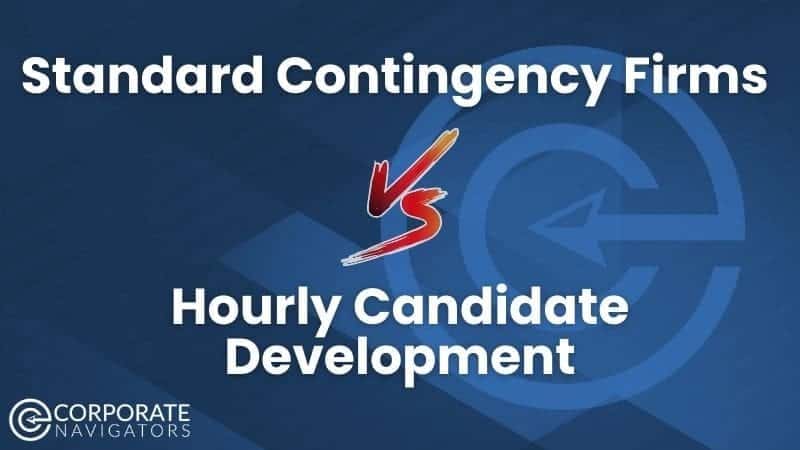
Table of Contents
What’s the Difference between Using an Hourly Candidate Development Firm vs. a Standard Contingency Firm?
Are you looking for a compelling alternative to the standard commission-based recruitment firm? Well, you’ve come to the right place.
If you’re here, then you’re more than likely looking for a cost-effective method to source talent without sacrificing on quality. While standard contingency firms do produce desirable results, there are instances in which choosing an hourly recruiting research firm like Corporate Navigators makes more sense for your budget and timeline. Today we will break down what sets our hourly service model apart from the traditional method.
The Hourly Candidate Development Model Vs. Standard Contingency Firm
When you need to source talent for a role at your company, the process is much simpler when you get support with recruiting research or a standard contingency firm. However, one model saves you more money and time, and that’s the hourly model at Corporate Navigators.
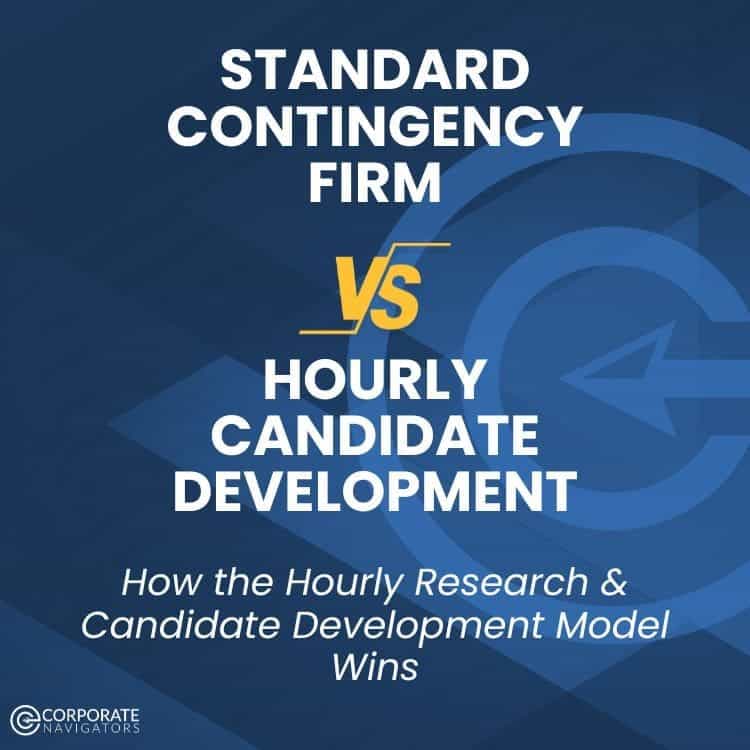
A Focus on Quality
Standard contingency firms are motivated by commission, which can produce high volume but low quality results. Meanwhile, hourly-based candidate developers who already earn good wages can take an unbiased approach and focus on finding on-target candidates without rushing the process for a placement. The focus is on quality and accuracy, as opposed to high volume with little vetting and bad data.
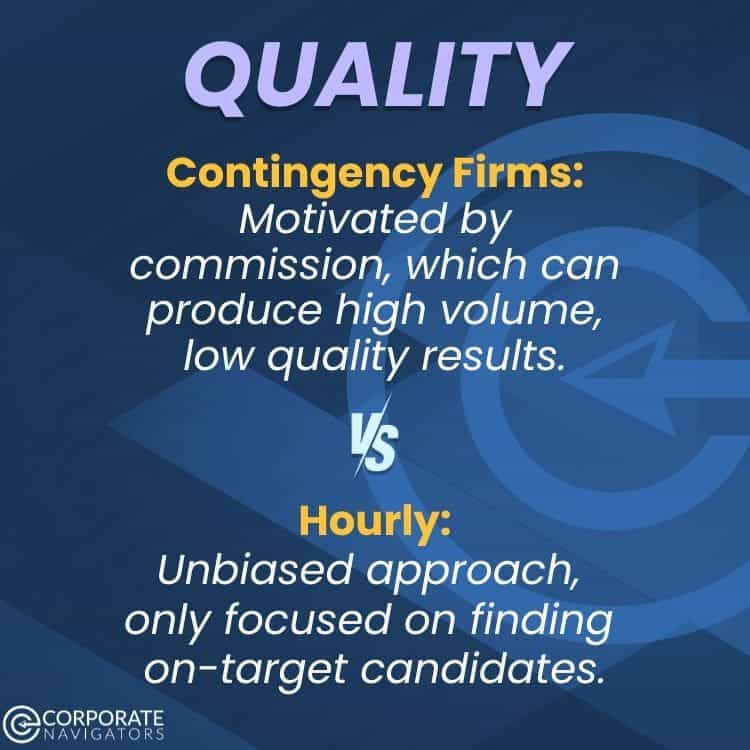
Pricing Model
With standard contingency firms, recruiters are motivated by commissions and/or placement fees, which average 25-30% of the future hire’s annual salary. While there are certainly situations where you need an all-inclusive recruitment solution like this, percentage-based commissions can not only increase the total cost-per-hire, but also inflate your candidate’s future salary.
Meanwhile, with hourly candidate development, you only pay for the hours as needed to fill the role. With no placement fees, the price breakdown is simple. Plus, there is no motivation to inflate the future candidate’s starting pay to get more commission since there isn’t any to begin with.
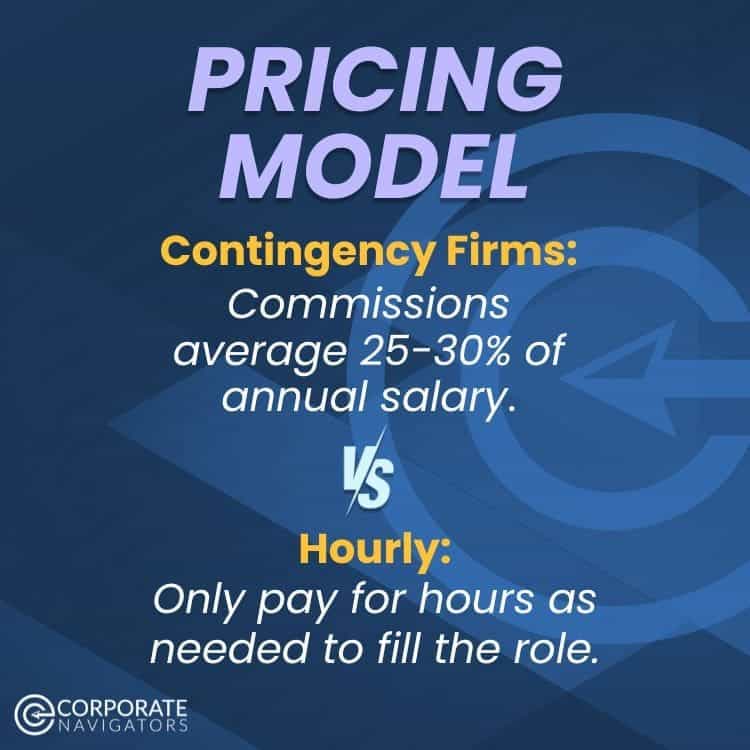
Cost-Per-Hire
When it comes to cost-per hire (CPH), you can’t beat the hourly candidate development model. If you are able to call the sourced candidates after we verify their eligibility and interest, you can expect an average of $6k CPH for a candidate with a future starting salary of $150k.
If you need a contingency firm to do the whole recruitment cycle (which includes calling them), then you can expect an average of $38k CPH for the same starting salary of $150k.
As you can see, both models have value and situations in which they would work for you, but one clearly offers more cost savings if you’re able to interview and onboard candidates yourself. And that’s the hourly model.
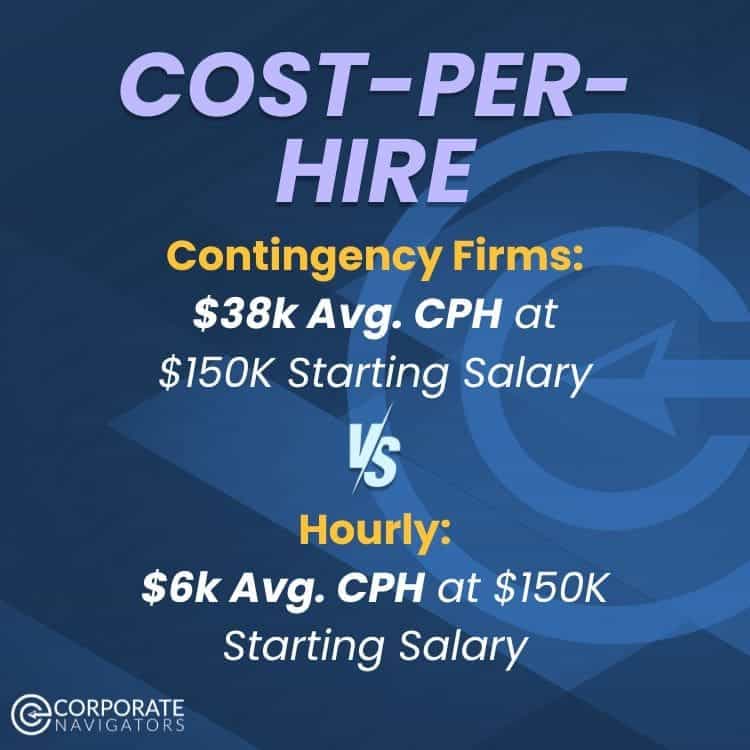
Contingency vs Hourly Candidate Development
Choosing between an hourly candidate development firm like Corporate Navigators and a standard contingency firm hinges on your priorities of cost-effectiveness and quality in talent acquisition.
While both models aim to source suitable candidates, the hourly model stands out for its focus on cost-efficiency and transparent pricing. By paying only for the hours needed to fill a role without additional placement fees or inflated salaries driven by commissions, businesses can achieve significant savings in their recruitment expenditure.
In addition, the hourly model emphasizes quality over quantity, ensuring a tailored approach to finding the right candidates without compromising on standards. Ultimately, whether driven by budget constraints or a need for targeted candidate sourcing, the hourly candidate development model presents a compelling alternative for companies seeking a strategic advantage in their hiring process.


